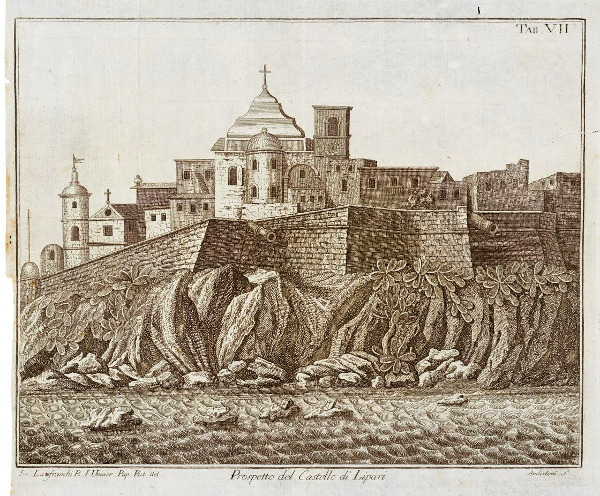Faustino Anderloni on:
[Wikipedia]
[Google]
[Amazon]

 Faustino Anderloni (1766,
Faustino Anderloni (1766,
by Alfredo Petrucci, from the'' Dizionario Biografico degli Italiani'' @ Treccani In 1784, he moved to Pavia to oversee the production of illustrations for two more of Scarpa's works, on the nervous system and bones. During that time, he also created plates for a major treatise on zoology and botany by Giovanni Antonio Scopoli. Upon completing his work there, he moved to Milan in 1795, where he reproduced works by

 Faustino Anderloni (1766,
Faustino Anderloni (1766, Brescia
Brescia (, locally ; lmo, link=no, label= Lombard, Brèsa ; lat, Brixia; vec, Bressa) is a city and ''comune'' in the region of Lombardy, Northern Italy. It is situated at the foot of the Alps, a few kilometers from the lakes Garda and Iseo. ...
- 9 January 1847, Pavia
Pavia (, , , ; la, Ticinum; Medieval Latin: ) is a town and comune of south-western Lombardy in northern Italy, south of Milan on the lower Ticino river near its confluence with the Po. It has a population of c. 73,086. The city was the capit ...
) was an Italian engraver.
Life and work
Anderloni was born in 1766 in Brescia,Republic of Venice
The Republic of Venice ( vec, Repùblega de Venèsia) or Venetian Republic ( vec, Repùblega Vèneta, links=no), traditionally known as La Serenissima ( en, Most Serene Republic of Venice, italics=yes; vec, Serenìsima Repùblega de Venèsia, ...
. He was one of seven children born to Giovanni Battista Anderloni, a wealthy farmer, and Anna Maria née Ronco. His youngest brother, Pietro
Pietro is an Italian masculine given name. Notable people with the name include:
People
* Pietro I Candiano (c. 842–887), briefly the 16th Doge of Venice
* Pietro Tribuno (died 912), 17th Doge of Venice, from 887 to his death
* Pietro II Can ...
, whom he helped train, also became an engraver. While studying in his hometown, he developed an early interest in scientific and educational illustration. By 1782, he had already produced a few plates for a work on anatomy by Antonio Scarpa
Antonio Scarpa (9 May 1752 – 31 October 1832) was an Italian anatomist and professor.
Biography
Scarpa was born to an impoverished family in the frazione of Lorenzaga, Motta di Livenza, Veneto. An uncle, who was a member of the priesthood, gav ...
, which was published in Pavia.Biography of Anderloniby Alfredo Petrucci, from the'' Dizionario Biografico degli Italiani'' @ Treccani In 1784, he moved to Pavia to oversee the production of illustrations for two more of Scarpa's works, on the nervous system and bones. During that time, he also created plates for a major treatise on zoology and botany by Giovanni Antonio Scopoli. Upon completing his work there, he moved to Milan in 1795, where he reproduced works by
Guido Reni
Guido Reni (; 4 November 1575 – 18 August 1642) was an Italian painter of the Baroque period, although his works showed a classical manner, similar to Simon Vouet, Nicolas Poussin, and Philippe de Champaigne. He painted primarily religious ...
and Correggio, as well as fresco
Fresco (plural ''frescos'' or ''frescoes'') is a technique of mural painting executed upon freshly laid ("wet") lime plaster. Water is used as the vehicle for the dry-powder pigment to merge with the plaster, and with the setting of the plaste ...
es by Perino del Vaga at the Palazzo Doria. He also collaborated on several projects with Giuseppe Longhi
Giuseppe Longhi (13 October 1766 – 12 January 1831) was an Italian engraver and writer.
Biography
Longhi was born in Monza, and initially trained at the Ambrosian Seminary, studying philosophy and letters. By the age of 20, he decided to beco ...
.
He returned to Pavia in 1801 to become an art teacher. His brother Pietro joined him there, to learn engraving and be his assistant. In 1808, he was appointed to the Chair of Drawing at the University of Pavia. He would remain there until 1830.
From there, he settled in Florence, where his brother-in-law, Giovita Garavaglia
Giovita Garavaglia (18 March 1790 in Pavia, Region of Lombardy – 27 April 1835 in Florence) was an Italian engraver.
Biography
Initially a pupil of Pietro Anderloni, whom he helped engrave the medical depictions of Antonio Scarpa, he later wo ...
, had recently become director of the Academy of Fine Arts. When Garavaglia died, four years later, he completed several works that had been left unfinished. Over the next few years, he specialized in portraits.
He died in Pavia, aged eighty. His works have been preserved in numerous collections; notably at the Harvard Art Museums.
References
Further reading
* Emilio Anderloni (Ed.), ''La forza, incisione inedita di Faustino Anderloni: Pietro Anderloni ricordato nella stampa moderna'', Ceriani e Cesana, 1906 * Susanna Zatti, "Note su Faustino Anderloni e Giovita Garavaglia incisori a Pavia nella prima metà dell'ottocento", in: ''Bollettino della Società Pavese di Storia Patria'', Como, Litografia New Press, 1993, pp. 185-195External links
{{DEFAULTSORT:Anderloni, Faustino 1766 births 1847 deaths Republic of Venice artists Italian engravers Italian illustrators Artists from Brescia Academic staff of the University of Pavia